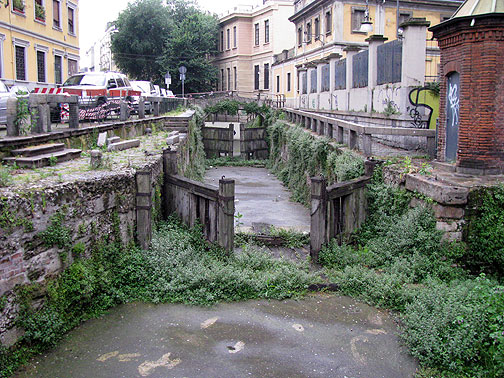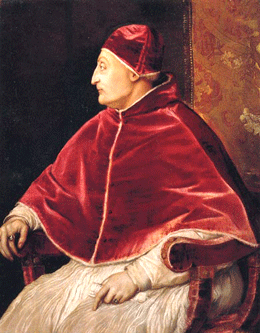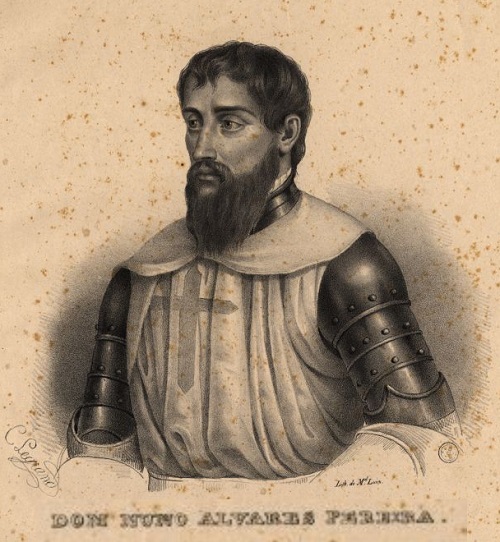The lock at the end of Via San Marco, below Viale Monte Grappa, once marked the arrival point for those coming into the city from the north along the Naviglio Martesana (NM): now emptied of water, it still has the decaying wooden lock gates which are identical to those in a drawing from Leonardo’s Atlantic Codex.

Water was abundant in Lombardy, and Leonardo was fascinated by it, beginning to study the Navigli canals as soon as he arrived in Milan; the first visual record of the linkup of NM with the circle of the Navigli is a 1463 drawing by Leonardo himself. NM was in fact linked with the city’s moat in 1496, in a project carried out by Giuliano Guasconi. Leonardo, at the time engineer to the court of Ludovico il Moro, served as consultant. One problem that had to be resolved was the difference in level between the Naviglio Grande, which reaches the city from below, and the NM, which reaches it from above. Hence the resort to a system of lock gates, which had already been used in Milan from the first half of the fifteenth century.
As can be seen from the autograph drawing in the Atlanic Codex, dated between 1506 and 1513 (picture above), Leonardo developed an improvement on the lock-gate mechanism with the addition of a lower opening; operated by a specially designed “off-centre” hinge, this allowed for gradual opening in response to the increasing flow of water and easier regulation of the pressure exerted on the lock gates.











